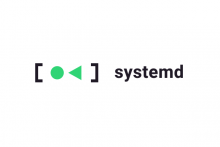macOS からWindows を経由して SSH する機会があったため、調査した内容を残しておきます。
Web上で色々情報が見つかったのですが、現在では古い情報も混ざっているため自分用に整理した内容です。

- 要件
- 結果
— Linuxでのncコマンド
— Macでのncコマンド - 調査
— HTTP Proxy 経由のSSH
— netcat(nc)色々
—– Ncat(Nmap付属)
—– Open BSD netcat
—– Amazon Linux の例
—– Ubuntu の例
—– Netcat Darwin Port
—– GNU netcat
要件
macOS -> win_proxy(Windows) -> web(Linux)
上記のように直接接続が許可されていない、win_proxy(WindowsのProxyサーバ)の背後のweb(Linuxサーバ)に対し、 macOSからSSH接続を行います。
HTTP CONNECT メソッドで接続を確立しトンネルすることで SSH での接続が可能になります。
環境は以下の通りです。
- 接続元
- macOS Sierra version 10.12.6
- Proxy
- Windows Server 2016
- Squid for Windows 3.5.28
- Windows Server 2016
結果
Nmap付属のncatを使用すると最も環境に依存せずに実現可能と思います。
- Download the Free Nmap Security Scanner for Linux/Mac/Windows
--proxy-typeオプションで “http” を指定します。
Specify proxy type (“http” or “socks4” or “socks5”)
$ ssh -o ProxyCommand='ncat --proxy-type http --proxy win_proxy:3128 %h %p' -i ~/.ssh/id_rsa ubuntu@web
# ssh config
Host web
Hostname web
User ubuntu
IdentityFile ~/.ssh/id_rsa
ProxyCommand ncat --proxy-type http --proxy win_proxy:3128 %h %p
ServerAliveInterval 10
Linuxでのncコマンド
-X オプションで “connect” を指定します。
Supported protocols are “4” (SOCKS v.4), “5” (SOCKS v.5) and “connect” (HTTPS proxy).
If the protocol is not specified, SOCKS version 5 is used.
ssh ProxyCommand='nc -X connect -x win_proxy:3128 %h %p' -i ~/.ssh/id_rsa ubuntu@web
# ssh config
Host web
Hostname web
User ubuntu
IdentityFile ~/.ssh/id_rsa
ProxyCommand nc -X connect -x win_proxy:3128 %h %p
ServerAliveInterval 10
Macでのncコマンド
macOS 標準搭載のncコマンドでは接続エラーを解消できずでした。
nc: Proxy error: "HTTP/1.1 200 Connection established" ssh_exchange_identification: Connection closed by remote host
間にLinux等を挟む事で無理やり繋ぐ事は可能です。
- macOS -> bastion_linux -> win_proxy -> web(Linux)
ssh ProxyCommand='ssh bastion_linux nc --proxy-type http --proxy win_proxy:3128 %h %p' -i ~/.ssh/id_rsa ubuntu@web
# ssh_config
Host bastion_linux
Hostname bastion_linux
User hoge
Host web
Hostname web
User ubuntu
IdentityFile ~/.ssh/id_rsa
ProxyCommand ssh bastion_linux nc --proxy-type http --proxy win_proxy:3128 %h %p
ServerAliveInterval 10
調査
以下メモレベルですが、上記Nmap付属のncat使用に至った経緯です。
無駄に長いので折り畳みます。
HTTP Proxy 経由のSSH
OpenSSH で利用するには以下のいずれかが必要になります。
- connect コマンド (connect.c)
- 要コンパイル
- 公式? connect / wiki / Home — Bitbucket
- netcat(nc) コマンド
- Macは標準導入されている。派生コマンドが多数(後述)
-Wオプション- OpenSSH 5.4 以降 で利用可能な模様
- connect-proxy
- Debian/Ubuntu であれば apt で導入可能な模様
- Redhat系は RPMForge から connect を入れる事例が多い(しかし、既に RPMForge/RepoForge は無い物と考えた方が良い)
netcat(nc)色々
nc コマンドは色々な派生バージョンがあり、どれを指しているのかは環境・オプションにより異なっているようです。
- 派生・互換ツール(Wiki引用)
- Ncat(Nmap付属)
- Nmapの一部として開発された。GPLライセンス。
- OpenBSD netcat
- 0から書き直されたnetcat互換ツールでIPv6に対応しているnetcat。BSDライセンス。
- GNU netcat
- 0から書き直されたnetcat互換ツール。GPLライセンス。
- Netcat Darwin Port
- Mac OS Xで使用可能なnetcatである。
- Windows版netcat
- Windows上で使用可能なnetcatである。
- Jetcat
- netcatの一部の機能をJavaで実現したものである。
Ncat(Nmap付属)
環境依存が最も少ないのではないかと思われる物です。
Mac OS X 用のバイナリもあります。 今回使用した端末は諸事情によりソフトウェアのインストールが行えなかったため実際には未確認です。
Linux上での接続は確認できました。オプション等は同じようなので、同様に接続可能と思われます。
proxy-type オプションに http 指定して接続します。
# インストール $ sudo rpm -vhU https://nmap.org/dist/ncat-7.70-1.x86_64.rpm Retrieving https://nmap.org/dist/ncat-7.70-1.x86_64.rpm Preparing... ################################# [100%] Updating / installing... 1:ncat-2:7.70-1 ################################# [100%] $ which ncat /usr/bin/ncat
# ヘルプ
$ ncat --help
Ncat 7.70 ( https://nmap.org/ncat )
Usage: ncat [options] [hostname] [port]
Options taking a time assume seconds. Append 'ms' for milliseconds,
's' for seconds, 'm' for minutes, or 'h' for hours (e.g. 500ms).
-4 Use IPv4 only
-6 Use IPv6 only
-U, --unixsock Use Unix domain sockets only
-C, --crlf Use CRLF for EOL sequence
-c, --sh-exec <command> Executes the given command via /bin/sh
-e, --exec <command> Executes the given command
--lua-exec <filename> Executes the given Lua script
-g hop1[,hop2,...] Loose source routing hop points (8 max)
-G <n> Loose source routing hop pointer (4, 8, 12, ...)
-m, --max-conns <n> Maximum <n> simultaneous connections
-h, --help Display this help screen
-d, --delay <time> Wait between read/writes
-o, --output <filename> Dump session data to a file
-x, --hex-dump <filename> Dump session data as hex to a file
-i, --idle-timeout <time> Idle read/write timeout
-p, --source-port port Specify source port to use
-s, --source addr Specify source address to use (doesn't affect -l)
-l, --listen Bind and listen for incoming connections
-k, --keep-open Accept multiple connections in listen mode
-n, --nodns Do not resolve hostnames via DNS
-t, --telnet Answer Telnet negotiations
-u, --udp Use UDP instead of default TCP
--sctp Use SCTP instead of default TCP
-v, --verbose Set verbosity level (can be used several times)
-w, --wait <time> Connect timeout
-z Zero-I/O mode, report connection status only
--append-output Append rather than clobber specified output files
--send-only Only send data, ignoring received; quit on EOF
--recv-only Only receive data, never send anything
--allow Allow only given hosts to connect to Ncat
--allowfile A file of hosts allowed to connect to Ncat
--deny Deny given hosts from connecting to Ncat
--denyfile A file of hosts denied from connecting to Ncat
--broker Enable Ncat's connection brokering mode
--chat Start a simple Ncat chat server
--proxy <addr[:port]> Specify address of host to proxy through
--proxy-type <type> Specify proxy type ("http" or "socks4" or "socks5")
--proxy-auth <auth> Authenticate with HTTP or SOCKS proxy server
--ssl Connect or listen with SSL
--ssl-cert Specify SSL certificate file (PEM) for listening
--ssl-key Specify SSL private key (PEM) for listening
--ssl-verify Verify trust and domain name of certificates
--ssl-trustfile PEM file containing trusted SSL certificates
--ssl-ciphers Cipherlist containing SSL ciphers to use
--ssl-alpn ALPN protocol list to use.
--version Display Ncat's version information and exit
See the ncat(1) manpage for full options, descriptions and usage examples
OpenBSD netcat
Linux に標準導入されているコマンドを指している物と思われます。
Amazon Linux の例
- Amazon Linux AMI 2018.03
$ yum list installed nc nc.x86_64 1.84-24.8.amzn1 installed [ec2-user@ip-172-30-2-241 ~]$ $ which nc /usr/bin/nc
# help 抜粋
$ nc -h
usage: nc [-46DdhklnrStUuvzC] [-i interval] [-p source_port]
[-s source_ip_address] [-T ToS] [-w timeout] [-X proxy_version]
[-x proxy_address[:port]] [hostname] [port[s]]
# man 抜粋
NC(1) BSD General Commands Manual NC(1)
NAME
nc — arbitrary TCP and UDP connections and listens
SYNOPSIS
nc [-46DdhklnrStUuvzC] [-i interval] [-p source_port] [-s source_ip_address] [-T ToS] [-w timeout] [-X proxy_protocol] [-x proxy_address[:port]]
[hostname] [port[s]]
DESCRIPTION
The nc (or netcat) utility is used for just about anything under the sun involving TCP or UDP. It can open TCP connections, send UDP packets, listen
on arbitrary TCP and UDP ports, do port scanning, and deal with both IPv4 and IPv6. Unlike telnet(1), nc scripts nicely, and separates error messages
onto standard error instead of sending them to standard output, as telnet(1) does with some.
・・・
SEE ALSO
cat(1), ssh(1)
AUTHORS
Original implementation by *Hobbit* ⟨hobbit@avian.org⟩.
Rewritten with IPv6 support by Eric Jackson <ericj@monkey.org>.
CAVEATS
UDP port scans will always succeed (i.e. report the port as open), rendering the -uz combination of flags relatively useless.
BSD August 22, 2006 BSD
Ubuntu の例
- Ubuntu 16.04.5 LTS
$ dpkg -l | grep netcat ii netcat-openbsd 1.105-7ubuntu1 amd64 TCP/IP swiss army knife $ which nc /bin/nc $ ls -l /bin/nc lrwxrwxrwx 1 root root 20 Sep 12 13:39 /bin/nc -> /etc/alternatives/nc $ ls -l /etc/alternatives/nc lrwxrwxrwx 1 root root 15 Sep 12 13:39 /etc/alternatives/nc -> /bin/nc.openbsd $ ls -l /bin/nc.openbsd -rwxr-xr-x 1 root root 31248 Dec 4 2012 /bin/nc.openbsd
# help
$ nc
This is nc from the netcat-openbsd package. An alternative nc is available
in the netcat-traditional package.
usage: nc [-46bCDdhjklnrStUuvZz] [-I length] [-i interval] [-O length]
[-P proxy_username] [-p source_port] [-q seconds] [-s source]
[-T toskeyword] [-V rtable] [-w timeout] [-X proxy_protocol]
[-x proxy_address[:port]] [destination] [port]
# man(抜粋)
$ man nc |cat
NC(1) BSD General Commands Manual NC(1)
NAME
nc — arbitrary TCP and UDP connections and listens
SYNOPSIS
nc [-46bCDdhklnrStUuvZz] [-I length] [-i interval] [-O length]
[-P proxy_username] [-p source_port] [-q seconds] [-s source]
[-T toskeyword] [-V rtable] [-w timeout] [-X proxy_protocol] [-x
proxy_address[:port]] [destination] [port]
DESCRIPTION
The nc (or netcat) utility is used for just about anything under the sun
involving TCP, UDP, or UNIX-domain sockets. It can open TCP connec‐
tions, send UDP packets, listen on arbitrary TCP and UDP ports, do port
scanning, and deal with both IPv4 and IPv6. Unlike telnet(1), nc
scripts nicely, and separates error messages onto standard error instead
of sending them to standard output, as telnet(1) does with some.
・・・
SEE ALSO
cat(1), ssh(1)
AUTHORS
Original implementation by *Hobbit* ⟨hobbit@avian.org⟩.
Rewritten with IPv6 support by Eric Jackson <ericj@monkey.org>.
Modified for Debian port by Aron Xu ⟨aron@debian.org⟩.
CAVEATS
UDP port scans using the -uz combination of flags will always report
success irrespective of the target machine's state. However, in con‐
junction with a traffic sniffer either on the target machine or an
intermediary device, the -uz combination could be useful for communica‐
tions diagnostics. Note that the amount of UDP traffic generated may be
limited either due to hardware resources and/or configuration settings.
BSD February 7, 2012 BSD
Netcat Darwin Port
Macで標準導入されているncコマンドを指すと思われます。
$ which nc /usr/bin/nc
# help(stringsからの)抜粋 ・・・ This help text %s%s -i secs Delay interval for lines sent, ports scanned Keep inbound sockets open for multiple connects Listen mode, for inbound connects %s%s Suppress name/port resolutions %s%s%s -p port Specify local port for remote connects (cannot use with -l) Randomize remote ports -s addr Local source address Answer TELNET negotiation Use UNIX domain socket UDP mode Verbose -w secs Timeout for connects and final net reads -X proto Proxy protocol: "4", "5" (SOCKS) or "connect" -x addr[:port] Specify proxy address and port Zero-I/O mode [used for scanning] %s%s Port numbers can be individual or ranges: lo-hi [inclusive] Set SO_RECV_ANYIF on socket Set SO_AWDL_UNRESTRICTED on socket -b ifbound Bind socket to interface Don't use cellular connection Don't use expensive interfaces Do not use flow advisory (flow adv enabled by default) -G conntimo Connection timeout in seconds -H keepidle Initial idle timeout in seconds -I keepintvl Interval for repeating idle timeouts in seconds -J keepcnt Number of times to repeat idle timeout -K tclass Specify traffic class -L num_probes Number of probes to send before generating a read timeout event Set SO_INTCOPROC_ALLOW on socket Use MULTIPATH domain socket -N num_probes Number of probes to send before generating a write timeout event Use old-style connect instead of connectx Issue socket options after connect/bind --apple-delegate-pid pid Set socket as delegate using pid --apple-delegate-uuid uuid Set socket as delegate using uuid --apple-ext-bk-idle Extended background idle time --apple-ecn Set the ECN mode --apple-sockev Receive and print socket events --apple-notify-ack Receive events when data gets acknowledged --apple-tos Set the IP_TOS or IPV6_TCLASS option --apple-netsvctype Set the network service type usage: nc [-46AacCDdEFhklMnOortUuvz] [-K tc] [-b boundif] [-i interval] [-p source_port] [--apple-delegate-pid pid] [--apple-delegate-uuid uuid] [-s source_ip_address] [-w timeout] [-X proxy_version] [-x proxy_address[:port]] [hostname] [port[s]] ・・・ @(#)PROGRAM:nc PROJECT:netcat-41
今回、この標準コマンドで繋ぐことができれば話が早かったのですが、 弊端末からは接続できない(以下エラーが解消できない)状態でした。
同様のNW構成としたLinux端末からは接続可能、また、接続可能な事例もいくつか見られましたので、環境・バージョンの問題かと思われます。
nc: Proxy error: "HTTP/1.1 200 Connection established" ssh_exchange_identification: Connection closed by remote host
- 参考URL
- Connect with SSH through a proxy – Stack Overflow
- OS X では SOCKS5 でしか繋げないような回答
- Squid – Users – squid upgrade issue and tunnelled ssh connections
- Squid 3.4.2 にアップデート後、ssh接続が利用不可となった事例
- Connect with SSH through a proxy – Stack Overflow
GNU netcat
brew でインストール可能です。 proxy_version のオプションが無く、http_proxyの指定ができないようでした。
$ brew install netcat $ brew list netcat /usr/local/Cellar/netcat/0.7.1/bin/nc /usr/local/Cellar/netcat/0.7.1/bin/netcat /usr/local/Cellar/netcat/0.7.1/share/info/netcat.info /usr/local/Cellar/netcat/0.7.1/share/man/ (2 files) $ which netcat /usr/local/bin/netcat $ ls /usr/local/Cellar/netcat/0.7.1/bin/ nc@ netcat*
# help $ netcat --help GNU netcat 0.7.1, a rewrite of the famous networking tool. Basic usages: connect to somewhere: netcat [options] hostname port [port] ... listen for inbound: netcat -l -p port [options] [hostname] [port] ... tunnel to somewhere: netcat -L hostname:port -p port [options] Mandatory arguments to long options are mandatory for short options too. Options: -c, --close close connection on EOF from stdin -e, --exec=PROGRAM program to exec after connect -g, --gateway=LIST source-routing hop point[s], up to 8 -G, --pointer=NUM source-routing pointer: 4, 8, 12, ... -h, --help display this help and exit -i, --interval=SECS delay interval for lines sent, ports scanned -l, --listen listen mode, for inbound connects -L, --tunnel=ADDRESS:PORT forward local port to remote address -n, --dont-resolve numeric-only IP addresses, no DNS -o, --output=FILE output hexdump traffic to FILE (implies -x) -p, --local-port=NUM local port number -r, --randomize randomize local and remote ports -s, --source=ADDRESS local source address (ip or hostname) -t, --tcp TCP mode (default) -T, --telnet answer using TELNET negotiation -u, --udp UDP mode -v, --verbose verbose (use twice to be more verbose) -V, --version output version information and exit -x, --hexdump hexdump incoming and outgoing traffic -w, --wait=SECS timeout for connects and final net reads -z, --zero zero-I/O mode (used for scanning) Remote port number can also be specified as range. Example: '1-1024'





